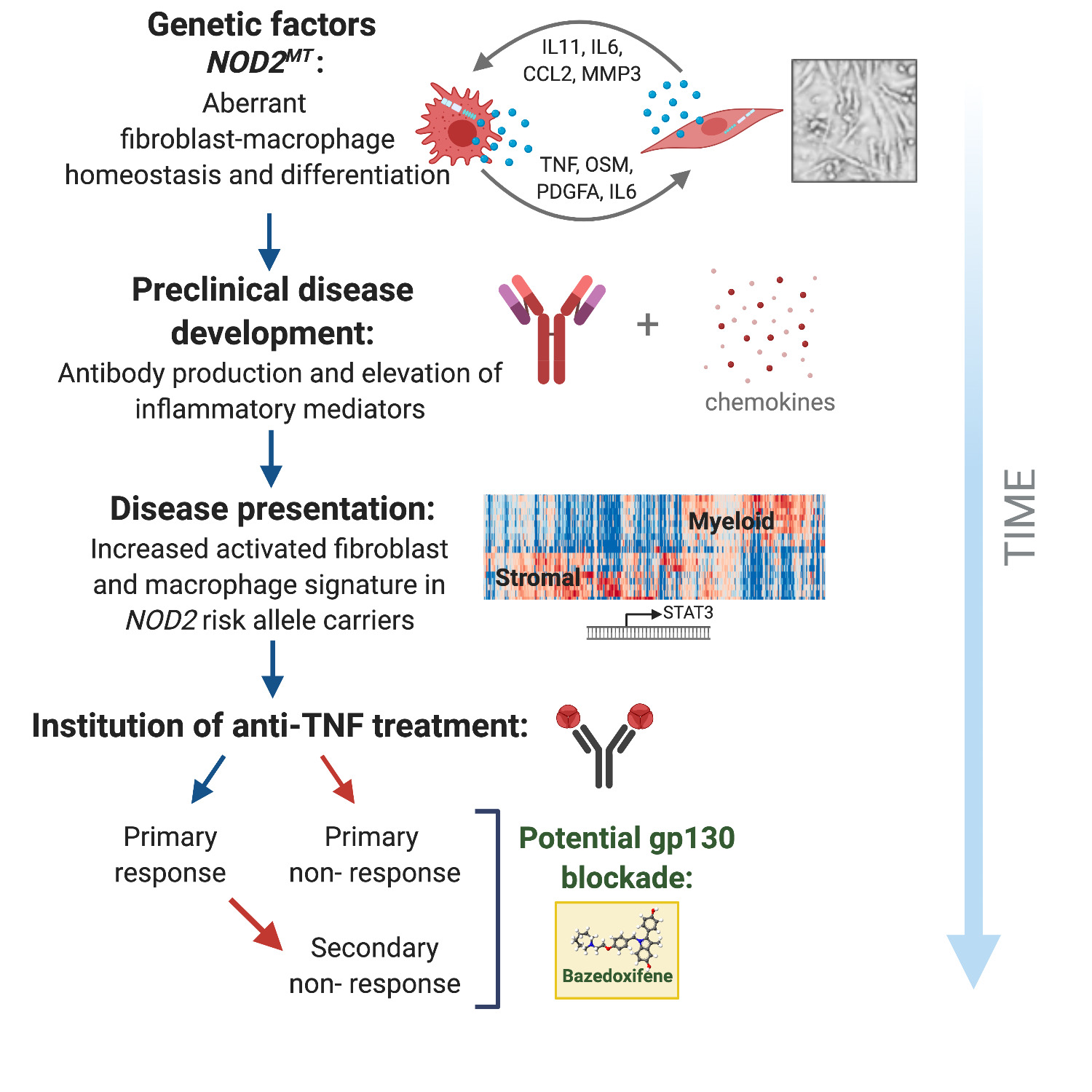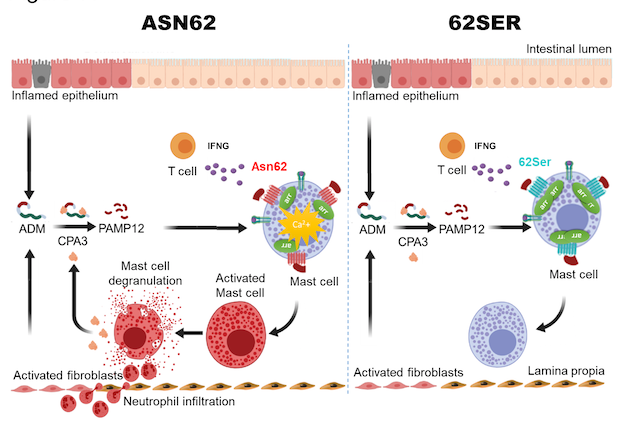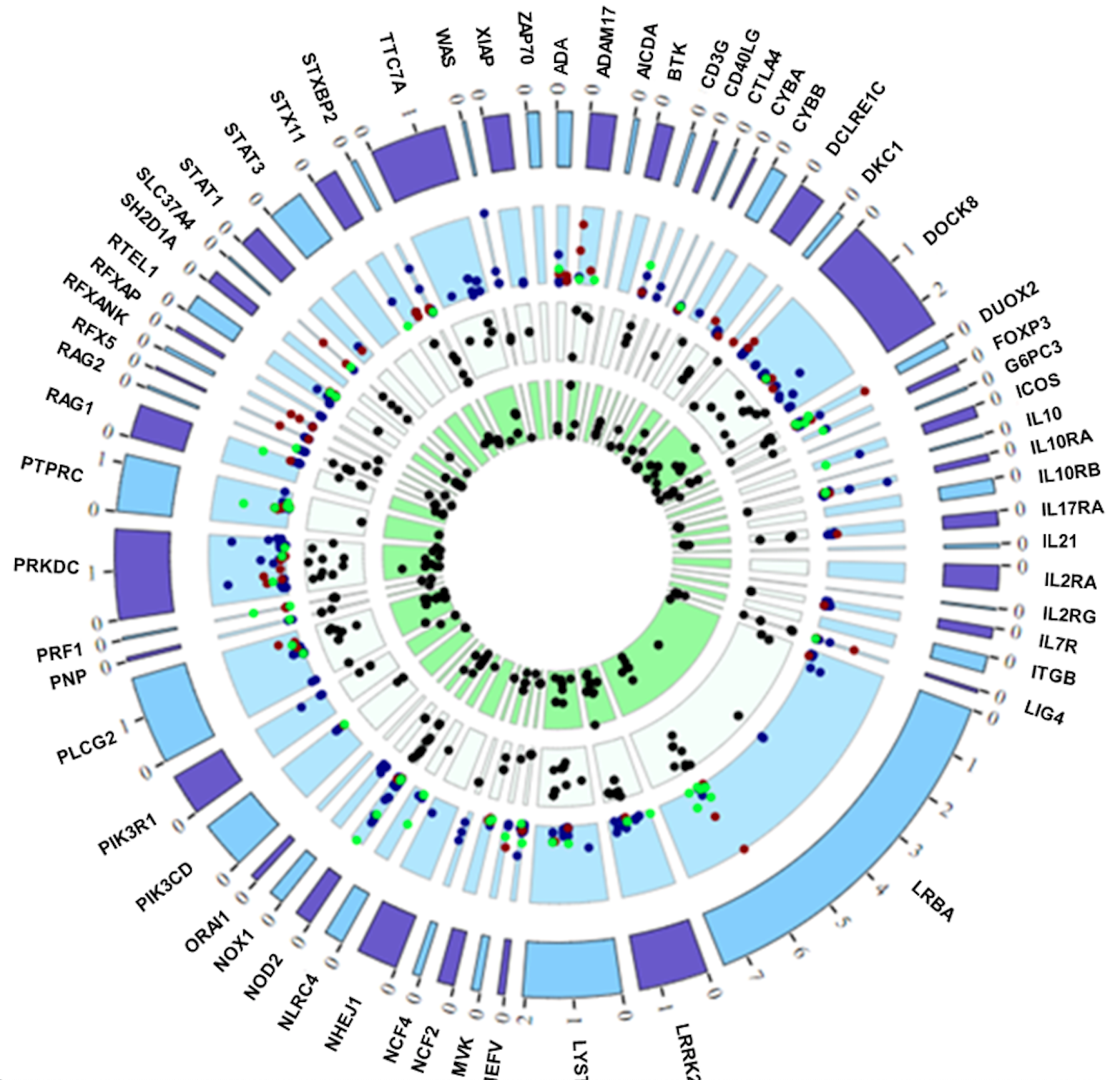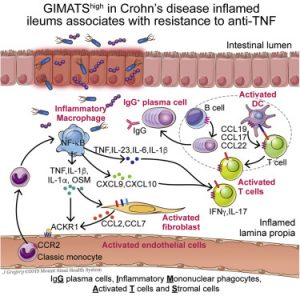April 2024 – PhD Candidate Rachel Levantovsky has published her work in Med, Multimodal Single Cell Analyses Reveal Mechanisms of Perisnal Fistula in Diverse Crohn’s Disease. Her discovery of unique fistula fibroblasts, distinct monocyte differentiation in individuals of African ancestry, and key transcription factor binding events provides insight into mechanisms that underlie disparities in fistula prevalence.
Category Archives: Uncategorized
Latest News: 2020 – 2021
March 2021 – PhD Candidate Shikha Nayar has published her work in Nature, A myeloid–stromal niche and gp130 rescue in NOD2-driven Crohn’s disease, demonstrating novel biological insights into NOD2-driven fibrosis in CD. Congratulations, Shikha! February 2021 – Congratulations to Kyle Gettler, Felix Chuang, and Rachel Levantovsky, who all had abstracts selected for lecture presentation at the Digestive Disease Week 2021 Meeting.
February 2021 – Congratulations to Kyle Gettler, Felix Chuang, and Rachel Levantovsky, who all had abstracts selected for lecture presentation at the Digestive Disease Week 2021 Meeting.
January 2021 – A protective variant in MRGPRX2, a receptor involved in mast cell activation, distinguishes inflamed regions in Ulcerative Colitis from non-inflamed regions, a finding by the Cho Lab described in a new study published in Gastroenterology.
Chen, E., Chuang, L. S., Giri, M., Villaverde, N., Hsu, N. Y., Sabic, K., … & Cho, J. H. (2021). Inflamed ulcerative colitis regions associated to MRGPRX2-mediated mast cell degranulation and cell activation modules, defining a new therapeutic target. Gastroenterology.
December 2020 – In a study published in Gastroenterology, we have shown that integration of genetic data from diverse populations improves prediction of IBD outcomes; the study of rare variants from diverse populations can highlight population specific risk variants for Ulcerative Colitis, such those in the very-early onset IBD associated gene LRBA. This study was featured by Nature Reviews Gastroenterology & Hepatology and by Mount Sinai.

Gettler, K., Levantovsky, R., Moscati, A., Giri, M., Wu, Y., Hsu, N. Y., … & UK IBD Genetics Consortium. (2020). Common and rare variant prediction and penetrance of IBD in a large, multi-ethnic, health system-based biobank cohort. Gastroenterology.
June 2020 – Dr. Ling-shiang (Felix) Chuang, instructor in the Cho Lab, publishes editorial
Dr. Ling-shiang (Felix) Chuang, instructor in the Cho Lab, published the editorial Labs in the time of COVID: an early-career scientist’s view in Disease Models and Mechanisms. He provides an insider’s perspective of the far-reaching effects of COVID-19 on the careers of early-stage scientists, and the flexibility and support necessary to recover from this unprecedented event for career viability.
Chuang, L. “Labs in the time of COVID: an early-career scientist’s view”
May 2020 – The Cho Lab has been involved in a number of efforts to better understand the immunology and precision genomics of COVID-19.
Graduate student Rachel Levantovsky is a co-author of Immunology of COVID-19: current state of the science, a comprehensive review of the early published and preprint literature.
Vabret, Nicolas, Graham J. Britton, Conor Gruber, Samarth Hegde, Joel Kim, Maria Kuksin, Rachel Levantovsky et al. “Immunology of COVID-19: current state of the science.” Immunity (2020). DOI: https://doi.org/10.1016/j.immuni.2020.05.002
November 2019 – Judy Cho is promoted to Dean of Translational Genetics at the Icahn School of Medicine at Mount Sinai
September 2019 – In collaboration with Miriam Merad and Effi Kenigsberg, we identified a new cellular module that is associated with resistance to anti-TNF therapy for Crohn’s disease using single cell analysis of the terminal ileum involved in active disease.
Mid-Atlantic Regional Zebrafish (MARZ) Fall 2017 meeting
Date: Friday, Sep 22 @ NYU Langone Medical Center (550 First Avenue between E 30th St and E 33th St), New York City
Title of talk
Zebrafish modeling defines complex innate immune mechanisms in sepsis and repetitive intestinal injury
Presenter
Ling-shiang (Felix) Chuang, Ph.D.
Poster
Zebrafish modeling defines complex innate immune mechanisms in sepsis and repetitive intestinal injury
Presenter
Ling-shiang (Felix) Chuang, Ph.D.
Ling-shiang (Felix) Chuang
Ling-shiang (Felix) Chuang
5/9/2017
The complications of Crohn’s Disease (CD) such as fistulas or strictures are some of the main reasons that require patients to undergo surgery. A fistula is an abnormal channel connecting the intestine or colon to another internal organ, and strictures are narrowings in the intestine which can make it difficult for food matter to pass through. It has been hypothesized that early recognition and prompt treatment are the key to reduce complications. Drs. Subra Kugathasan, Judy Cho and Marla Dubinsky tested this hypothesis with RNA sequencing and clinical data from pediatric CD patients and showed that early treatment of anti-TNFα reduced the formation of fistulas but not strictures. This work has been published in the high impact journal The Lancet.
The new discovery started with Crohn’s and Colitis Foundation’s “RISK Stratification” study, the largest newly onset study completed on pediatric Crohn’s disease patients. A total cohort of 1,112 CD children enrolled upon diagnosis, of which 913 were included in the published study. Researchers used intestinal gene expression levels to identify risk factor genes and identified distinct biological gene expression signatures at baseline that could distinguish children who will develop strictures form those who develop fistulas or strictures. In combination with clinical data, they showed that patients who received early anti-TNFα therapy were less likely to have fistulas (p=0.0296) but not strictures (p= 0.76) than those who did not receive early anti-TNFα therapy. This research sheds light on building predictors of complications and treatment outcomes at time of diagnosis using genetic signatures and clinical variables.
Further reading:
Prediction of complicated disease course for children newly diagnosed with Crohn’s disease: a multicentre inception cohort study. Kugathasan S. et. al., Lancet. 2017 Apr 29;389(10080):1710-1718. doi: 10.1016/S0140-6736(17)30317-3. Epub 2017 Mar 2.
Dr. Ling-shiang (Felix) Chuang and Philippe Ronel Labrias presented their research from Cho lab
Dr. Ling-shiang (Felix) Chuang and Philippe Ronel Labrias presented their research from Cho lab at the 3rd Human Genetics in NYC Meeting.
Publication
Kugathasan S, Denson LA, Walters TD, Kim MO, Marigorta UM, Schirmer M, Mondal K, Liu C, Griffiths A, Noe JD, Crandall WV, Snapper S, Rabizadeh S, Rosh JR, Shapiro JM, Guthery S, Mack DR, Kellermayer R, Kappelman MD, Steiner S, Moulton DE, Keljo D, Cohen S, Oliva-Hemker M, Heyman MB, Otley AR, Baker SS, Evans JS, Kirschner BS, Patel AS, Ziring D, Trapnell BC, Sylvester FA, Stephens MC, Baldassano RN, Markowitz JF, Cho JH, Xavier RJ, Huttenhower C, Aronow BJ, Gibson G, Hyams JS, Dubinsky MC.
Lancet. 2017 Mar 1. pii
GM-CSF targeted therapy for Crohn’s Disease.
Personalized treatment based on individual mutations: GM-CSF targeted therapy for Crohn’s Disease
The current treatment for Crohn’s Disease (CD) is heavily focused on suppressing the adaptive immune response to relieve inflammation. Our work on the CSF2RB mutation in the Ashkenazi Jewish population challenges that concept and provides genetic and functional data to support the theory that susceptibility to CD comes from defects of the innate immune response against commensal bacteria. Our work was published in the leading journal in the field of Gastroenterology.
After sequencing DNA of approximately 1,500 unrelated affected individuals and 2,500 unaffected Ashkenazi Jewish individuals, we narrowed in on the genetic variant in the CSF2RB gene. This variant was found in approximately 4% of healthy Ashkenazi individuals but in approximately 6% of those with CD. CSF2RB is the receptor of granulocyte-macrophage colony stimulating factor (GM-CSF). We first demonstrated that GM-CSF signaling play a crucial role in maintaining gut homeostasis. We further undertook functional experiments to elucidate the impact, at a cellular level, of this mutation. With cell line data and monocytes from CD patients with this mutation, our data showed reduced cellular responses to stimulation by GM-CSF.
Our work shows the role of CM-CSF/CSF2RB signaling in the pathogenesis of CD. Moreover, the CD patients carrying this mutation are the best candidates for GM-CSF targeted therapy. The findings that we presented will likely be of broad interest and have the potential to shift the focus of the field from adaptive to innate immunity in CD pathogenesis. This is a novel prospect in the era of personalized medicine: to personalize treatment based on individual mutations.
Further reading:
Chuang LS et. al., A Frameshift in CSF2RB Predominant Among Ashkenazi Jews Increases Risk for Crohn’s Disease and Reduces Monocyte Signaling via GM-CSF. Gastroenterology. 2016 Oct;151(4):710-723. http://www.gastrojournal.org/article/S0016-5085(16)34717-5/abstract
Family Practice News: CSF2RB mutation, common in Ashkenazim, linked to Crohn’s. http://www.mdedge.com/familypracticenews/article/114644/gastroenterology/csf2rb-mutation-common-ashkenazim-linked-crohns
GM-CSF in CD: ignited interest from two large data sets? Gut. 2017 Jan;66(1):191-192 http://gut.bmj.com/content/66/1/191.long




